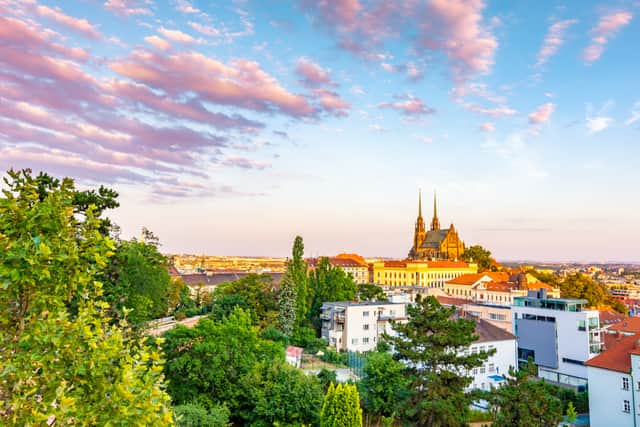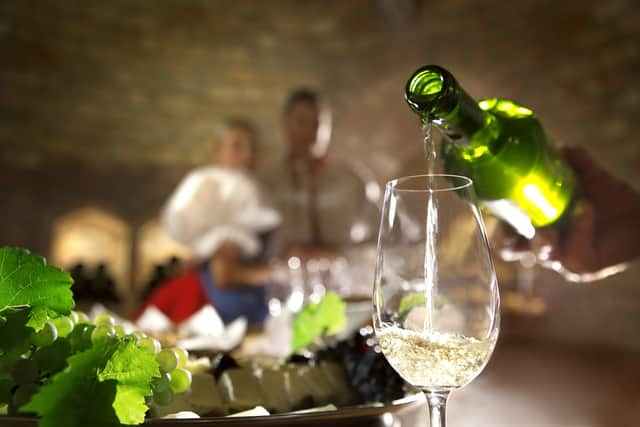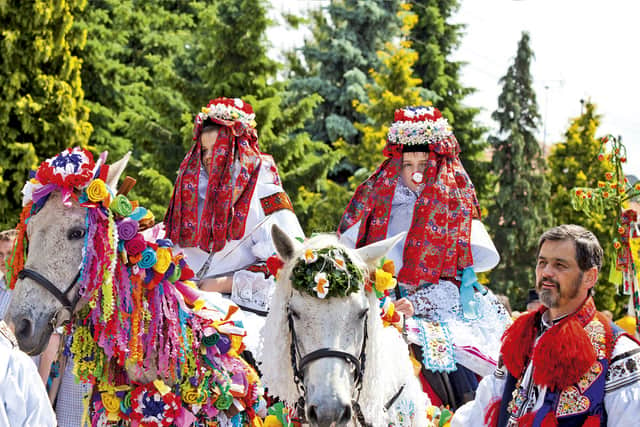Moravia: visit Czechia's wine region for fascinating history, gorgeous scenery and, of course, barrels of wine
and live on Freeview channel 276
When you think of wine you probably don’t think of Czechia. Italy comes to mind, and France, Argentina, South Africa, Australia probably, but not Czechia.
Yet the central European nation is home to one of the most vibrant wine regions on the continent, and much more besides. Moravia, in the east of the country, boasts vibrant wineries, beautiful natural landscapes, and barrels of culture and history (literally).
Advertisement
Hide AdAdvertisement
Hide AdI had the pleasure of soaking up the delights of Moravia on a four day wine tour organised by Czech Tourism.
Over the days I spent in Moravia I was able to take part in four different wine tastings, each of which was unique. The first was at the beautiful Gurdau Winery in Kurdějov where I was treated to a variety of astonishing whites, the pinnacle of which was the Riesling Cibeby 2021 - a fantastic rich sweet wine with tastes of pear, honey and peaches.


The second tasting was at the cellar beneath the stunning Valtice Palace - here I was surrounded on all sides by award-winning wines from the region. Visitors can pay to taste as many of the dozens of wines on display as they like in a two-hour period. When, at the end of the tasting, I was told I had 20 minutes to try whichever wines I put the old adage "the best way to learn about wine is by drinking it", to the test.
Next stop on the wine tasting itinerary was Vino Cibulka, a gorgeous family-run winery tucked away in the greenest spot in Mikulov. Here I tasted a range of sparkling wines - and whilst I don’t normally go in for sparkling, I was pleasantly surprised by the depth of flavour and complexities in each glass.
Advertisement
Hide AdAdvertisement
Hide AdThe last tasting was held at Rochus open air museum, where a few treats were in store. The guide JD, who had an unbridled passion for wine, asked us to think about what we were drinking and to use all of our senses to really get the most from the experience. This tasting was also followed by the opportunity to make vdolečky, traditional Moravian festive cakes. I must confess that I found I was better at drinking than baking.
Don’t let these loving descriptions of Czechia’s awesome vintages lead you to believe that Moravia is devoid of other delights. Indeed, whilst the trip was first and foremost a wine tour, there was much more to recommend Moravia. In fact, if I had not had a drop of wine whilst there I would have still considered it an extremely worthwhile visit (though I am glad to have tasted so many dynamic wines).


Brno, Czechia’s second biggest city is a deeply historic place - Spilberk Castle tells us of Czechia in the middle ages, whilst 10-Z Bunker, a nuclear fallout shelter from the Communist era, which now serves as a unique hotel and museum, is a reminder of the country’s painful recent past. It is a paradoxical city - seen from the viewing tower, or the castle’s ramparts, you take in the Soviet-era brutalism cohabiting with folk style architecture.
Mikulov stands out for its Mediterranean feel, a quaint town where you could while away the summer days drinking coffee and wine in any one of its many cafes and restaurants. It’s also home to the country’s largest wine barrel - crafted in the mid-17th century and able to hold 100,000 bottle’s worth of wine, standing beside it is akin to being in the presence of a great battleship from another age.
Advertisement
Hide AdAdvertisement
Hide AdThe flooded quarry outside Mikulov’s town centre was a little slice of paradise, and a great spot for some wild swimming on a cool evening. I don’t remember the last time I felt as peaceful as when I sunned myself in the pristine water of that quarry.


Yet it was on my last day in Czechia that the true magic of Moravia really impressed itself upon me. After a relaxing morning spent laying on a boat as we cruised the Baťa Canal, under the careful captainship of five year old Eli, and his father, we later arrived in Vlčnov for the Ride of the Kings - a mesmerising folkloric event. The colourful celebration, which sees men in traditional dress riding horses adorned with flowers through the streets, dates back to the early 19th century, though its origins are unclear.
I also need to pay tribute to Moravia’s food scene - Brno in particular is worth exploring for the restaurants alone which are testament to the diversity of its people. I cannot recommend MANYA, a sushi and sake restaurant enough. It was the best sushi I have ever had outside of Japan. Other great food destinations in Moravia include Pivnice Golem, opposite the Horní Synagogue in Mikulov’s old Jewish Quarter, which boasted an excellent Jewish menu, as well as traditional dishes.
I could wax on about the food on offer at these destinations for pages, but I understand that half the pleasure of travelling is stumbling across beautiful hidden bistros, cafes, and eateries yourself. So permit me to briefly mention Vinařství Šílová’s flavoursome kulajda soup. Hotel Lotrinský’s astounding marinated cheeses, and Anton Florian’s beautiful and light langoš, before allowing you to go off in search of more destinations.
Advertisement
Hide AdAdvertisement
Hide AdThere’s no escaping Czechia’s painful past, but Moravia doesn’t try to. In Moravia you are in the midst of a country that is well aware of its years spent under the communist yolk - a history that is not hidden or buried. But Moravia has also moved on in the last 35 years, has found its own identity, and forged a new path as a contender among Europe’s greatest wine regions.
Comment Guidelines
National World encourages reader discussion on our stories. User feedback, insights and back-and-forth exchanges add a rich layer of context to reporting. Please review our Community Guidelines before commenting.
